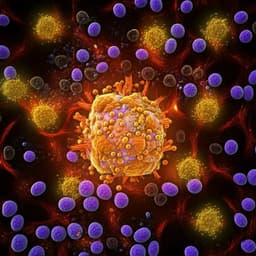
Chemistry
Unraveling two distinct polymorph transition mechanisms in one n-type single crystal for dynamic electronics
D. W. Davies, B. Seo, et al.
Discover the intriguing thermally activated phase transitions in 2-dimensional quinoidal terthiophene (2DQTT-o-B), a cutting-edge n-type organic semiconductor. This research unveils how alkyl chain engineering plays a crucial role in controlling polymorphic behaviors, paving the way for innovative electronic applications. Conducted by a team of experts, including Daniel William Davies and Ying Diao.
Playback language: English
Related Publications
Explore these studies to deepen your understanding of the subject.







